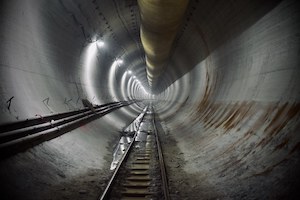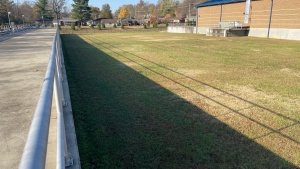Storage Basins
Underground storage basins are important tools in the elimination of sewer overflows. When heavy rains create more flow than the MSD Water Quality Treatment Center system can handle at one time, the overflowing sewage and stormwater gets directed into basins or held in large in-line pipes for temporary storage. As the rain slows down, and the treatment system catches up, the stored flow is pumped back into the system to be treated before being released into area waterways.
MSD basins and in-line storage pipes put in service since 2006 have a combined storage capacity of 178.3 million gallons. They have reduced Average Annual Overflow Volume from 6.5 billion gallons in 2001 to 2022 modeled projection of only 648 million gallons. That's a reduction of nearly 90 percent.
The basins are listed below in size order from largest to smallest. The largest is the Waterway Protection Tunnel. It is four miles long and constructed 220 feet below ground with a portion of it below the Ohio River. Click on the link below the tunnel image to learn all about this engineering marvel.
Waterway Protection Tunnel

- Capacity 53 million gallons
- Put into service June 2022
- Located underground in a 4-mile tunnel between N Twelfth Street and Lexington Road at Grinstead Drive
Learn more about the waterway protection tunnel
Shawnee Park Basin
- Capacity 26.3 million gallons
- Put into service March 2019
- Located on Southwestern Parkway at Shawnee Park
Logan Street Basin
- Capacity 17 million gallons
- Put into service December, 2017
- Location 935 Logan Street
Portland Basin

- Capacity 8.5 million gallons
- Put into service November, 2019
- Location [street address]
Clifton Heights Basin
- Capacity 6.9 million gallons
- Put into service December, 2018
- Location [street address]
Nightingale Basin

- Capacity 8 million gallons
- Put into service June 2017
- Location [street address]


